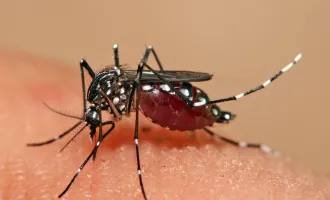Bridges Curriculum: Building the 21st-Century Physician
The staff at teaching hospitals such as UCSF Medical Center are accustomed to seeing third- and fourth-year medical students — with their bulging short white coats and unique air of eager ignorance — on the wards. But in two years, it might be common to see first-year medical students actively engaging in clinical experiences as well.
That’s when the School of Medicine’s new Bridges curriculum will be implemented, as part of an ongoing effort to keep medical training effective and relevant in light of changing clinical environments.
The development of the Bridges curriculum comes at the heels of another major curriculum redesign in 2000, which resulted in the Essential Core.
At that time, medical educators broke away from the traditional separation of the basic and clinical sciences, with separate courses in biochemistry, anatomy and pathophysiology.
Instead, courses were designed around topics such as the brain or metabolism, so that students could learn about normal and abnormal responses to disease at the same time, recapitulating how they would apply this knowledge in the clinics.
According to Catherine Lucey, Vice Dean for Medical Education, the Bridges curriculum seeks to build on the foundation laid by the Essential Core.
“Because the [Essential Core] was so successful, I thought it was possible that UCSF — with its history of solving great problems — could now turn its lens outward,” she said, “and ask how it could produce the type of physician that is going to survive, thrive and lead in a dynamic health care environment.”
Lucey’s vision has been guided by the 2010 report “Educating Physicians,” authored by UCSF faculty members Molly Cooke, David Irby and Bridget O’Brien.
“Educating Physicians” has been called the 21st century successor to the Flexner Report of 1910.
That original report, spearheaded by the educator Abraham Flexner, was born out of recognition of the inconsistent and often substandard education offered by medical schools at the turn of the 20th century.
After visiting all 155 of the medical schools in the United States and Canada, Flexner proposed a series of standards that came to define medical education in the United States, such as a focus on scientific inquiry and two years of supervised clinical experience.
The 2010 report, released on the Flexner Report’s centennial, was a culmination of a four-year study of 11 accredited medical schools and teaching hospitals, and found examples of remarkable pedagogy as well as significant shortcomings in the training of future physicians.
One particularly important challenge was the integration of knowledge with clinical practice.
“In the course of our fieldwork, we saw many instances of foundational knowledge poorly linked to experience; well-thought-out, integrated teaching subverted by inappropriate assessments; and missed opportunities for learners to participate in the important nonclinical roles physicians play within health care and more broadly in society,” the authors wrote.
Building an innovative curriculum that can address these shortcomings is one of the driving forces behind the new Bridges curriculum.
Take, for example, the question of how to bring first-year students to the wards and clinics — settings where most physicians will spend the bulk of their professional lives.
While the current curriculum at UCSF provides several opportunities for first-year students to participate in clinical settings, much of these experiences focus on solidifying learning, rather than contributing to patient care.
“We don’t think medical students at the very beginning are going to do that as junior physicians, because they don’t have any skills yet,” said Lucey. “But all of them come in with incredible abilities and a track record of tackling problems as members of teams, so we thought ‘What if we allowed them to work as members of teams to improve the care in the systems where we work?’ ”
This approach was adopted in the pilot project in the fall of 2013, embedding first-year medical students in a cardiology clinic not just to learn about cardiology, but also to learn about the system in which the care is delivered.
In addition, these students were trained in health coaching and encouraged to apply these principles with real patients. Members of the new curriculum’s working groups are currently in the process of studying the results of the pilot project.
Michael Davies, a second-year medical student on the Bridges’ Foundational Sciences Steering Committee, said one of the new curriculum’s biggest strengths is its emphasis on integrating not only clinical knowledge, but also the skills and experiences that students will need to be successful in their clinical rotations and beyond.
“Thus far, one of the new concepts is this idea of giving students an introduction to the tools that they would need to be immediately helpful to the patients, and for medical students to be leveraged to improve health care,” Davies said.
The Bridges curriculum is not scheduled to launch until 2016. Until then, the foundations of health care in the United States are likely to continue to run up against what Cooke and her coauthors have recognized as profound changes in society, subverting long-held truisms of what it means to be a doctor.
The 21st-century physician will need to adapt to a terrain different from the one Abraham Flexner encountered in 1910.
This too, will be a guiding principle in developing the Bridges curriculum.
“I think a big mindset change that needs to happen is getting people to understand that in this day and age, the physician can’t do everything,” said Lucey.
“The physician can’t know everything. The physician can’t be all for everyone. One of the most important things we have to teach people is how to work with other people in the health care environment.”


